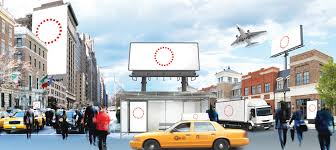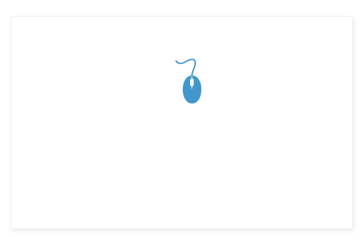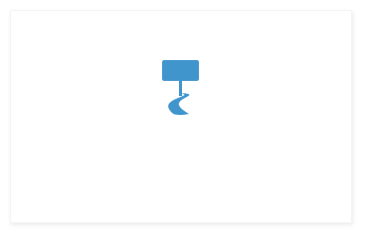Posted on March 23, 2016 by LocAdsAdmin No comments

What Is Out of Home?
Don’t worry if you can’t find your thinking cap, you’ve got this: Out-of-Home (OOH) advertising is any communications or media designed to interact with people who have left the comfort of their couches for the world outside their front doors.
Like the story of direct mail advertising in the United States, Out-of-Home’s tale includes more than a few chapters and is traceable back to the seventeenth century. That is around the time when heraldic inn-tavern signs—essentially a hand-painted name and logo on a wooden sign—began greeting passersby.
The pictorial sign and the tradesman’s symbol, the wooden Indian, and the barber’s pole followed in the early 1700s and, as literacy increased, so did the sophistication of outdoor messaging. Ultimately, outdoor advertising found its stride when large-scale circuses began coming to town—P.T. Barnum’s ubiquitous hyperbole on handbills and oversized illustrated posters garnered extensive public attention (display advertising was not allowed in newspapers at the time). The hubbub created by Barnum caught the attention of other industries—theatre companies, for instance—and outdoor advertising was on its way to Main Street, USA.
Today, outdoor advertising is a subset of OOH thanks to the availability of new and time-honored technologies that business marketers are leveraging to start conversations with customers. On that note, OOH encompasses three main areas: alternative; billboards; and transit.
Alternative
Alternative out-of-home media is, for the most part, advertising that does not fall into the more traditional OOH categories of either billboards or transit.
Alternative includes backlit ads on street-corner kiosks, a single-engine plane pulling a banner above a sports venue or event, a cinema-promo that catches your attention while you are waiting for the main attraction to start, advertising on newsstands, and strategically placed ads that help you pass the time while you are, let’s say, making a pit stop in the restroom.
Billboards
One of commercial arts’ largest canvases, billboards dot the highways and byways of America from coast to coast. (Well, almost—Alaska, Hawaii, Maine, and Vermont do not allow billboard signage along state highways.)
Billing boards, as they were once called, are now a primary category of OOH advertising with several industry-designated subsets:
- Bulletins
- Digital
- Human
- Jr. Posters
- Mobile
- Posters
- Wallscapes
Transit
Transit advertising is the placement of print (and digital) ads on, or within, a variety of mass-transit-based vehicles like:
- Bicycles
- Buses
- Light Rail cars
- Subway cars
- Taxis
Transit media is also placed in locations where people are en route from Point A to Point B such as:
- Airports
- Bus stations
- Rail stations
- Public benches
Pros
You want options? You got ‘em. OOH provides businesses and business owners with plenty of places to post their messages for the world at large to see. Or hear. Or touch. Additionally, OOH delivers more online activity per advertising dollar spent than any other offline medium. (Hint: this is another way of saying that it is helpful, nowadays, to have an integrated marketing plan).
OOH is especially good at generating buzz about a new product or service because of its ability to reach thousands of onlookers, and normally on a recurring basis. Backing up this notion is the fact that consumers spend more than 70 percent of their waking hours outside of their homes, according to a report published by the Outdoor Advertising Association of America (OAAA).
When combining OOH with other media channels to broadcast your message, out-of-home advertising is proven to lower the cost of your overall marketing program by increasing the retention rate of your message(s) with consumers.
Cons
There are not many but if you go big and choose to place your message on a large (or digital) billboard, it will not be cheap.
Also, ads may be vandalized or, when adhered to moving vehicles, eventually spattered with mud and/or soot from daily exposure to the elements.
What’s more, if you do not leverage your imagination and creativity, your message can easily get lost among the many out-of-home ads vying for the public’s attention.
ROI
For each dollar spent on out-of-home advertising, an average of $2.80 is received in product sales according to a global report by the OAAA.
Additional studies over the past decade consistently concluded that out-of-home advertising was effective at communicating information to consumers at the point in time when people are deciding on a purchase; OOH is also effective at locations proximate to where purchasing decisions are made.
Also, employing OOH in combination with other media helps to extend the retention rate of consumers by several days.
Response rate
Data released by USA TouchPoints in 2014 found that when consumers view an OOH ad, they engage in an “action” response (i.e., they make a purchase; they seek out or provide a purchase recommendation; they perform an online search; or they engage in brand-related social media activity) within 30 minutes of viewing the ad 22 percent of the time.
The same study revealed that OOH reaches 91 percent of consumers in the hour before visiting the shopping mall and 43 percent of consumers in the hour before mobile shopping takes place. Furthermore, when OOH is added to a media plan, it increases the reach of TV advertising by 18 percent and the reach of mobile advertising by up to 316 percent—OOH drives consumers from the big screen to the small screen.
Lastly, according to OAAA, 85 percent of consumers search the Web as a direct result of seeing an OOH ad after five exposures, and 58 percent of consumers make a purchase after five exposures to an OOH ad.
Cost per thousand (CPM) impressions
According to results released from a study performed by Morgan Stanley, the CPM of out-of-home advertising equaled $5.00 per one thousand people reached (i.e., 1,000 impressions). This dollar amount was second only to Web-based advertising (which had a CPM of $3.00) in the bang-for-the-buck category. Television (CPM: $28.00), magazine advertising (CPM: $16.00), newspaper advertising (CPM: $16.00), and radio (CPM: $10.00) were all more costly ways to reach consumers.
Data also shows that OOH advertising reduces the CPM of all media channels. That is, it makes every other media channel in which you choose to advertise more cost effective.
Hint
Measure your ad(s) and/or the effectiveness of your marketing campaigns.
With respect to measuring the effectiveness of your OOH ad(s) and/or campaign(s), TAB Out of Home Ratings is becoming an accepted industry resource.
Established in 1933, the Traffic Audit Bureau for Media Measurement Inc. (TAB) is a non-profit organization whose historical mission was to audit the circulation of out-of-home media in the United States. Recently, TAB’s role expanded and now includes the responsibilities of leading and supporting out-of-home industry-research initiatives.
For instance, TAB Out of Home Ratings data is comprehensive, standardized, quantitative and includes:
- Audience data for billboards, posters, jr. posters, transit, shelters, stations, and phone kiosks
- Geographically sensitive reach and frequency
- Granular detail, reporting individual out-of-home units in more than 200 designated market areas (DMA)
- Detailed demographic data
- Commercial ratings based on the people who see the advertising



Comments